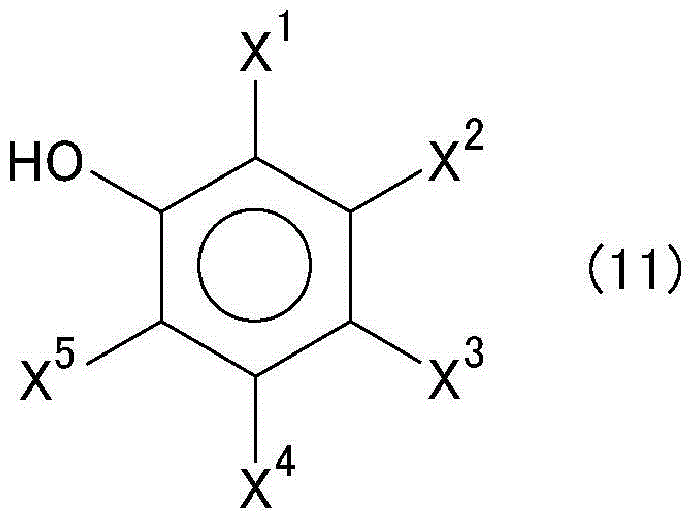Neutralizing salt for polishing liquid, polishing liquid for electronic material, polishing method, and manufacturing method of electronic material
A technology of electronic materials and manufacturing methods, applied in chemical instruments and methods, polishing compositions containing abrasives, manufacturing tools, etc., can solve problems such as hindering high capacity of magnetic disks, poor adhesion, etc., and achieve the continuity of grinding speed Excellent, adhesion reduction, surface defect reduction effect
- Summary
- Abstract
- Description
- Claims
- Application Information
AI Technical Summary
Problems solved by technology
Method used
Image
Examples
manufacture example 1
[0212] Production example 1 (manufacture of polyacrylic acid DBU salt)
[0213] 300 parts of isopropanol and 100 parts of ultrapure water were put into the reaction container whose temperature adjustment and stirring were possible, and after replacing the inside of the reaction container with nitrogen gas, it heated up to 75 degreeC. While stirring at 30 rpm, 407 parts of a 75% aqueous solution of acrylic acid and 95 parts of a 15% isopropanol solution of dimethyl 2,2'-azobisisobutyrate were simultaneously added dropwise over 3.5 hours.
[0214] After completion of the dropwise addition, after stirring at 75° C. for 5 hours, ultrapure water was intermittently added to prevent solidification in the system, and the mixture of water and isopropanol was distilled off until isopropanol could not be detected. The resulting polyacrylic acid aqueous solution was neutralized to pH 7.0 with 450 parts of DBU, and the concentration was adjusted with ultrapure water to obtain a 40% aqueous...
manufacture example 2
[0216] Production example 2 (manufacture of naphthalenesulfonic acid formaldehyde condensate DBU salt)
[0217] 21 parts of naphthalenesulfonic acid and 10 parts of ultrapure water were put into a stirred reaction vessel, and 8 parts of 37% formaldehyde were added dropwise over 3 hours while stirring to keep the temperature in the system at 80°C. After the dropwise addition, the temperature was raised to 105°C. After reacting for 25 hours, it was cooled to room temperature (about 25°C), adjusted to 25°C in a water bath while adding DBU slowly, and the pH was adjusted to 6.5 (using about 15 parts of DBU). Ultrapure water was added to adjust the solid content to 40%, thereby obtaining a 40% aqueous solution of DBU salt (AB-2) of a naphthalenesulfonic acid formaldehyde condensate as an anionic surfactant. In addition, Mw of the DBU salt of (AB-2) was 5,000.
manufacture example 3
[0218] Production example 3 (manufacture of polystyrene sulfonate guanidine salt)
[0219]100 parts of dichloroethane was charged into a temperature-adjustable and refluxed stirred reaction vessel, and nitrogen substitution was carried out under stirring. After that, the temperature was raised to 90° C., and dichloroethane was refluxed. Add 120 parts of styrene and 1.7 parts of 2,2'-azobisisobutyronitrile dissolved in 20 parts of dichloroethane in advance into the reaction container dropwise over 6 hours. After further polymerization for 1 hour. After the polymerization, it was cooled to 20° C. under a nitrogen seal, and then 105 parts of anhydrous sulfuric acid was added dropwise over 10 hours while controlling the temperature at 20° C. After the dropwise addition, sulfonation reaction was further performed for 3 hours. After the reaction, the solvent was distilled off to solidify, and then 345 parts of ultrapure water was injected and dissolved to obtain a polystyrenesulfon...
PUM
| Property | Measurement | Unit |
|---|---|---|
| particle size | aaaaa | aaaaa |
| particle size | aaaaa | aaaaa |
| particle size | aaaaa | aaaaa |
Abstract
Description
Claims
Application Information
 Login to view more
Login to view more - R&D Engineer
- R&D Manager
- IP Professional
- Industry Leading Data Capabilities
- Powerful AI technology
- Patent DNA Extraction
Browse by: Latest US Patents, China's latest patents, Technical Efficacy Thesaurus, Application Domain, Technology Topic.
© 2024 PatSnap. All rights reserved.Legal|Privacy policy|Modern Slavery Act Transparency Statement|Sitemap



